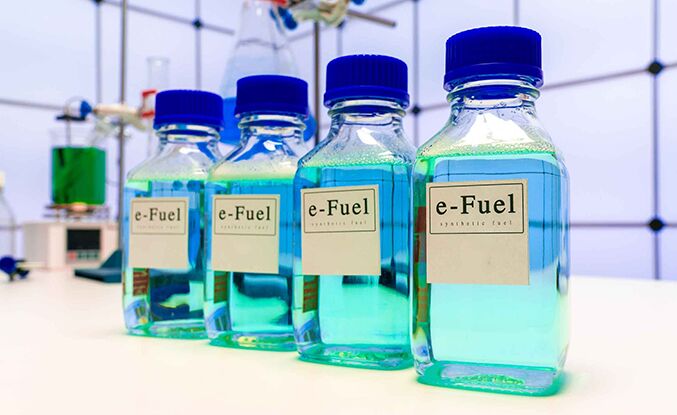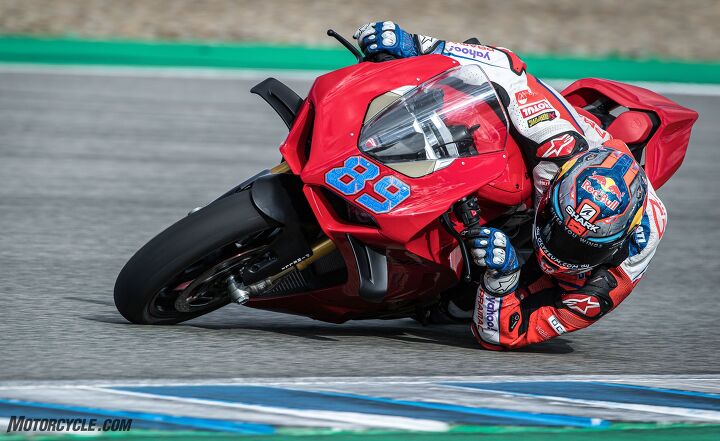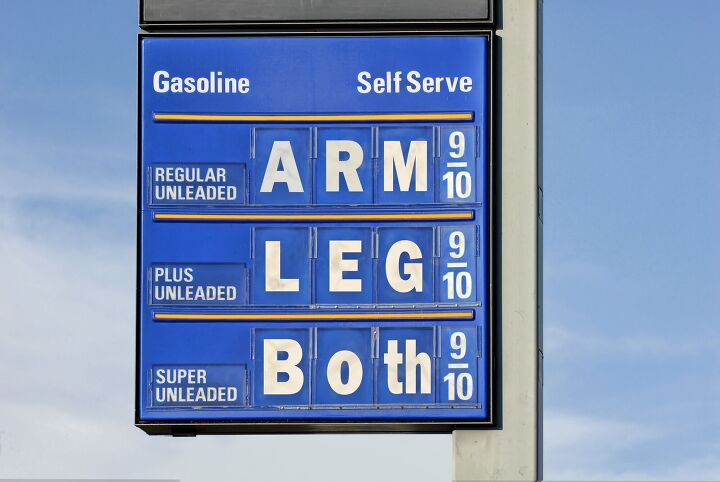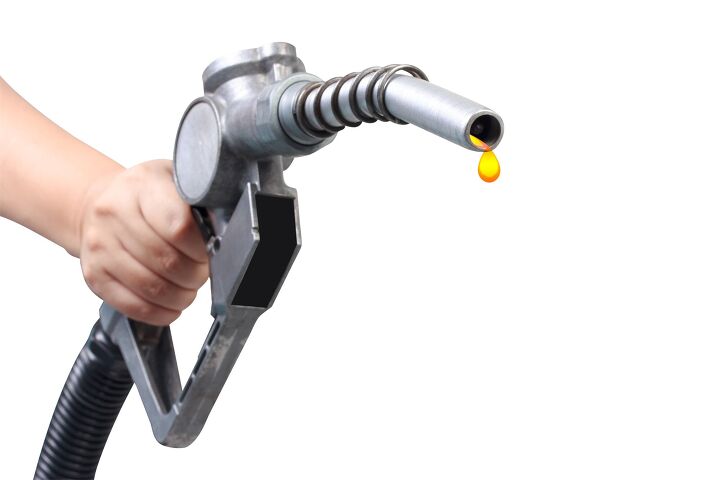The way forward for transportation and mobility is dealing with an attention-grabbing downside. Really, a sequence of issues. For one, humankind is contributing to a local weather disaster that must be corrected. For 2, there are far too many inside combustion engines littered throughout the globe to easily scrap all of them and begin over with electrification. For 3, as we’ve lengthy identified, finally our provide of useless dinosaur juice goes to dry up and we gained’t be capable of produce fossil fuels anymore. And whereas that would clear up downside primary (if the planet isn’t fully screwed by then), it simply makes downside quantity two that rather more severe. So, what will we do?
In case you’re to consider what the automotive and bike industries inform us, then battery-powered automobiles are the way in which of the longer term. This isn’t a debate about whether or not or not EVs will actually clear up our local weather issues, however somewhat, we’re EVs from a logistics standpoint alone. The worldwide infrastructure wants a significant increase to be even remotely near assembly demand.
As an increasing number of producers embrace electrical propulsion, the query stays – what will we do with the present automobiles on the street at this time?
Irrespective of the place you stand on electrical automobiles, or bikes in our case, the conversations are inclined to concentrate on what automobiles we’ll be working sooner or later and the way the bike of tomorrow might be electrical. One factor we don’t hear talked about a lot is what to do in regards to the present ICE automobiles on the street at this time. The bikes of yesterday and at this time aren’t going anyplace any time quickly, and so far as we will inform, each bike producer at the moment utilizing inside combustion engines will proceed to take action for the foreseeable future. Multiply this by the opposite sectors utilizing inside combustion engines and you may see how ignoring the matter in favor of electrics is disingenuous. How will we maintain all these automobiles operating whereas serving to to dramatically scale back emissions?
The reply may very well be artificial fuels, or eFuels. To not be confused with biofuels, that are derived from vegetation, eFuel is a carbon-neutral technique of manufacturing gas, and it may characterize the savior of the inner combustion engine. Or at the least delay its existence. Certainly, this is likely one of the objectives of the ACEM, the European Affiliation of Bike Producers, who’ve not too long ago joined the eFuel alliance, a European fee centered on how one can clear up the local weather disaster in motorized automobiles. As an alternative of focusing solely on one expertise – batteries, primarily – to repair the planet, ACEM and the eFuel alliance consider the answer ought to be multi-pronged. Electrical propulsion performs a component, nevertheless it’s only one department on a tree whose branches additionally embrace hydrogen, eFuel, biofuel, and different applied sciences that will not even exist but.
For the needs of this story, nonetheless, we’re going to concentrate on eFuel (the phrases eFuels and artificial fuels might be used interchangeably right here), as its functions and ramifications are very substantial.
What Is eFuel?
First issues first. What’s artificial gas within the first place? Merely put, eFuel entails splitting water into its two parts, hydrogen and oxygen, by way of a course of known as electrolysis. Crucially, to maintain the method carbon impartial, the ability to carry out electrolysis comes from renewable vitality sources like photo voltaic and wind farms. Subsequent, carbon dioxide (CO2) is captured immediately from the environment (as a substitute of from the bottom) and mixed with hydrogen to supply synthesized methanol. This methanol is then refined into gasoline you possibly can put in your gas tank and trip, drive, sail, fly, and so forth.
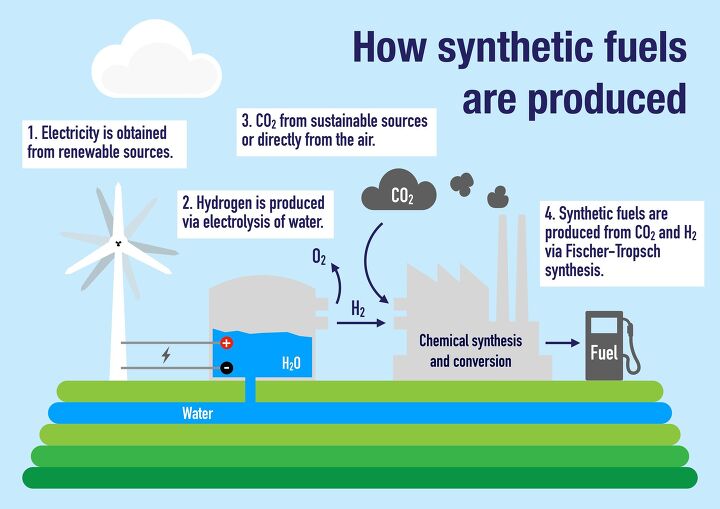
How renewable artificial fuels are produced from CO2 and water. Illustration by Dimitrios Karamitros/Shutterstock.com.
Why It’s A Large Deal
On the floor, eFuels could be simply the reply we’ve been searching for. Overlook the bikes of the longer term, a close to carbon-neutral gas supply that’s 85% cleaner than at this time’s fossil fuels means present bikes (and vehicles, vehicles, airplanes, ships, lawnmowers, farm tools, and so forth.) can keep on the street. Sure, that’s nice for markets just like the US, the place bikes are largely a luxurious merchandise, however if you consider the 1.3 billion automobiles throughout the globe, in line with Porsche, the importance of eFuel grows by an order of magnitude.
On an financial scale, take into account this: in line with ACEM, the bike trade introduced in 21.4 billion Euros to Europe’s GDP. A world the place liquid gas is phased out would flip that quantity on its head. And let’s not even begin with the remainder of the worldwide markets, particularly Asia, the place powered two-wheelers are a necessity. Issue within the jobs and financial system saved and/or created due to eFuels, and its significance climbs but once more.

Scooters are a mainstay of mobility in a number of nations, and can proceed to be so for a very long time, even when EV costs come down and infrastructure goes up. Picture by Nelson Antoine/Shutterstock.com.
In actual fact, some well-recognized producers are taking an lively stake within the recreation. On the automotive facet, McLaren has introduced it would produce a improvement automobile to run on eFuel, stating solely minimal modifications will have to be made to accommodate it, which is likely one of the the reason why it’s so engaging. So far as placing cash the place their mouth is, Porsche has taken the lead right here by investing $75 million in a Siemens eFuel plant in Chile, house to the world’s largest wind arrays, as a part of its pilot program to supply 130,000 liters of eFuel per yr, which it would initially use in its racing program earlier than utilizing it to energy its street vehicles. All within the title of retaining the 911 alive. Particularly previous ones.
Contemplating the automotive trade takes the lead on curbing emissions, it’s no marvel why artificial gas is a scorching subject over there. Bikes are a blip on the radar by comparability, nevertheless it’s solely a matter of time earlier than the political and regulatory dialog strikes from 4 wheels to 2. Because of this the ACEM is attempting to get in entrance of it, so bike producers (at the least European ones) have a framework to start out with and may help dictate the dialog when the time comes.
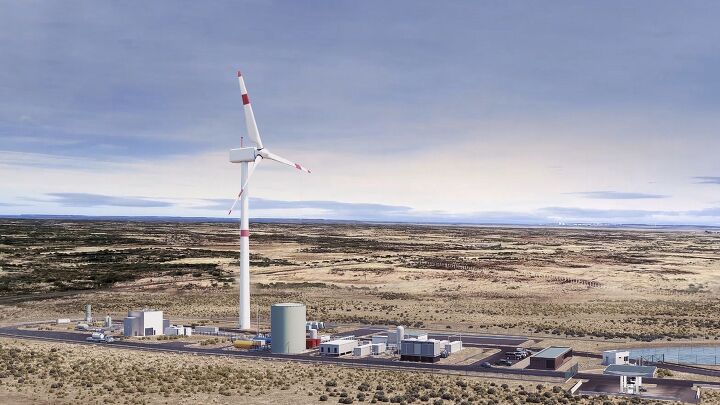
An animation of the Haru Oni mission – a joint mission between Porsche and Siemens Power – in Chile.
And it’s not just like the bike trade is transferring blindly ahead in a fossil fuel-driven world. Clearly electrical bikes from corporations like Zero, Energica, KTM, and others exist, however the improvement of eFuel for the bike trade is quietly taking form within the background. By 2024, MotoGP has mandated the usage of fuels with at the least 40% non-fossil origin, and by 2027 the sequence would require 100% of its gas be carbon impartial. These are huge objectives with not plenty of time to get there.
For his or her half, Ducati and KTM, each contributors within the MotoGP championship, are taking a proactive strategy to artificial fuels and a extra sustainable future. Throughout a latest ACEM press occasion, Karl-Maria Grugl, Head of Homologation & Regulatory Affairs for KTM, pointed in the direction of a multi-pathway KTM is taking that features each electrical propulsion and eFuel beneath the “proper automobile, proper place, proper vitality service” paradigm.

KTM has been within the electrical bike recreation for a couple of years now with the Freeride electrical platform. In the case of small-displacement efficiency, you possibly can anticipate to see extra electrical fashions from the Austrian agency.
KTM already produces electrical bikes beneath the Freeride banner, and additional electrification is the place Grugl sees the corporate heading for efficiency classes beneath 250cc. Over the 250cc threshold, KTM is sticking with inside combustion engines for now, some or all of which to be powered by eFuels. Grugl hopes the adoption of eFuel catches on globally, particularly in an enormous market just like the US, however he acknowledges adoption might be laborious. “The US is fractured by way of necessities,” he says. “California units the scene for decarbonization, with comparable ambitions to the EU, however California additionally has a non-technology impartial strategy.” That is evidenced by the state’s latest legislation banning the sale of latest gasoline vehicles and vehicles by 2035 in favor of battery energy. Grugl fears dumping all of the eggs within the battery-powered basket goes to hamper international efforts to cut back emissions with a number of methods in parallel.
For Ducati, CEO Claudio Domenicali can be adopting the multi-prong strategy, however for barely totally different causes. In Domenicali’s view, Ducati is a luxurious model, not a mobility model. The corporate gained’t keep afloat atop the gross sales of hundreds of thousands of scooters like, say, Honda will. It stakes its declare as providing its clients with a premium expertise by providing the most effective bike in a class. With all of the uncertainty surrounding what’s going to energy automobiles of the longer term, Ducati desires to be prepared, irrespective of the end result.
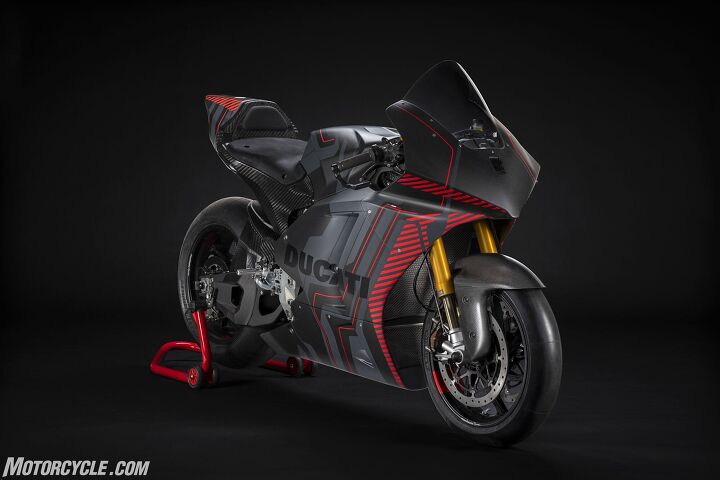
Whereas KTM are solely utilizing electrical energy for small-displacement efficiency, Ducati are going within the different path. Beginning in 2023 Ducati would be the sole producer for the MotoE racing sequence, the place it would develop the highest-performance electrical bike that it could. This take a look at mattress will bear fruit in Ducati’s eventual road-going merchandise for the lots.
This is likely one of the the reason why it agreed to be the only bike producer for the MotoE sequence, with a four-year contract beginning in 2023. There’s nonetheless no crucible like racing, and this trial-by-fire strategy to constructing the most effective electrical bike will finally trickle all the way down to client fashions sooner or later.
The identical holds true for the adoption of artificial fuels. The MotoGP mandates have pressured the arms of all of the producers within the sequence, however Domenicali sees the adoption of eFuels as an attention-grabbing problem for Ducati, each by way of efficiency but in addition for mass manufacturing, as, in principle, the present gas infrastructure can be utilized instantly. Like Porsche to a point, Ducati is very eager to see eFuels develop into extra distinguished so the Ducatisti can maintain using their bikes.
For such a small firm like Ducati to be spending in eFuel R&D, it actually brings with it some dangers, however apparently, says Domenicali, this spending is important “as a result of there’s plenty of uncertainty on the earth,” particularly with reference to propulsion expertise of the longer term. He continues, “The chance of shedding cash in improvement isn’t as unhealthy as shedding cash after we’re not prepared for the longer term.”
The Challenges
If artificial gas is the reply to all our issues, then why aren’t we listening to extra about it? Really, the controversy has been raging on the automotive facet for a couple of years now, however as talked about earlier the bike sector is far smaller and thus much less necessary. Nonetheless, the adoption of artificial fuels, particularly for a motorbike, is a bit tough, and the explanations could be damaged down into three details: Effectivity, Price, and Availability. These causes additionally result in two extra factors which might be interrelated: Producer buy-in and Political uncertainty.
Effectivity
For as a lot as electrical bikes (and EVs total) get a nasty rap for being boring, soulless modes of transportation (one thing we disagree with, BTW), EVs are very environment friendly by way of vitality manufacturing making it to the rear wheel of your bike. Varied research have proven that an electrical automobile could be anyplace from 40% – 70% environment friendly, which means that ranging from the vitality manufacturing course of, as a lot as 70% of the vitality stays as soon as it arrives on the rear wheel.
Artificial gas, by comparability, is dismal. If you issue within the electrolysis course of, carbon dioxide seize, the synthesis and refining course of, and the inherent inefficiencies of the inner combustion engine, the above research present solely 18% of the vitality is making it to the rear wheel – at greatest. At worst, that quantity drops into the only digits. That is the rationale Mercedes, in contrast to a few of its rival automobile makers, hasn’t purchased into eFuels. Nonetheless, by way of well-to-wheel effectivity, conventional gasoline is barely about 13% environment friendly. Neither quantity is especially nice, thoughts you, but when we’re going to be inefficient, we would as nicely do it with carbon-neutral fuels.
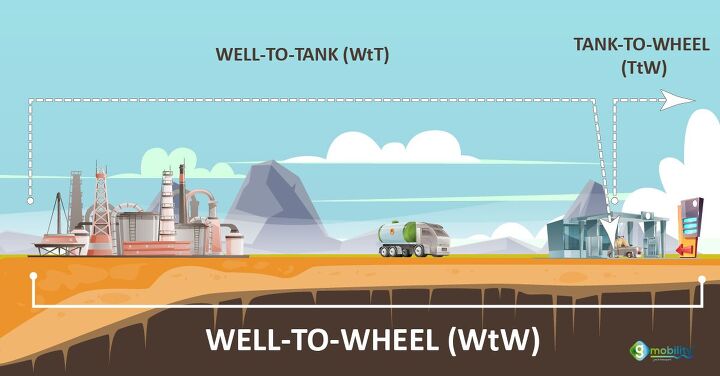
When contemplating gas effectivity from the wells to the wheels of your automobile, each artificial and conventional gasoline rating somewhat low. However once more, this resolution may at the least maintain at this time’s automobiles on the street whereas nonetheless contributing to decrease internet emissions. Picture by gmobility
To place it one other manner, present estimates present that you simply’ll want at the least 4 occasions as a lot electrical energy technology between eFuel and batteries to energy the present fleet of automobiles.
Price
This results in simply how a lot it prices to make artificial gas. In keeping with this examine, by 2030 eFuel would value round 3 Euros a liter – or over $13 per US gallon. Europeans are used to petrol costs costing near this a lot, however American audiences would completely lose their thoughts at gas costs this excessive (although it’d persuade much more to ditch their vehicles for bikes…).
A partial solution to offset and/or scale back this value is to benefit from areas on the earth the place sunshine and wind are considerable, so the price of producing electrical energy is nearly nil. Because of this areas of Chile, Germany, and offshore wind farms are being exploited for his or her wind, whereas solar belts all through the world are getting used to reap photo voltaic vitality. However the truth stays that there aren’t almost sufficient wind or photo voltaic farms in existence at this time, and ramping up these numbers might be extremely costly and tough.
Availability
The associated fee downside goes hand in hand with eFuel’s lack of availability at current. Not surprisingly with a expertise in its infancy, there aren’t many refineries at the moment producing artificial gas. A minimum of not on a big scale. Earlier we talked about Porsche investing in a Siemens plant in Chile. It’s forecasted to supply 500,000,000 – half a billion – liters of eFuel by 2026. That is nice, besides the US alone consumed 467 billion liters of gas in 2020. This quantities to the Chile plant supplying lower than 0.1% of US consumption. If true, that’s truly an honest quantity for a single plant. Scalability might be key.
At present, the eFuel alliance predicts artificial fuels may steadily be blended with conventional fuels at rising charges till synthetics make up 100% of the gas popping out of the pumps. The issue is that 100% takeover gained’t occur till 2050.
Producer and Political Purchase-In
Making rising expertise extra widespread isn’t new. You solely want to take a look at the private electronics sector for proof. However in the case of rising tech with international local weather influence, the hurdles for mass adoption are a lot larger. Very like battery tech and EVs have seen a latest growth due to producers, governments, and regulatory our bodies around the globe aligning themselves with the tech and dedicating funding in the direction of it, the issues artificial gas faces may at the least be partially alleviated with comparable buy-in.
The very fact stays that the inner combustion engine isn’t going anyplace. Not within the rapid future, nor within the intermediate future. And there’s additionally the purpose made to start with – there are already hundreds of thousands of ICE bikes circling around the globe at this time. What will we do with these? Little or no consideration has been given to serving to curb our local weather disaster with present automobiles in tandem with future automobiles.
Conclusion
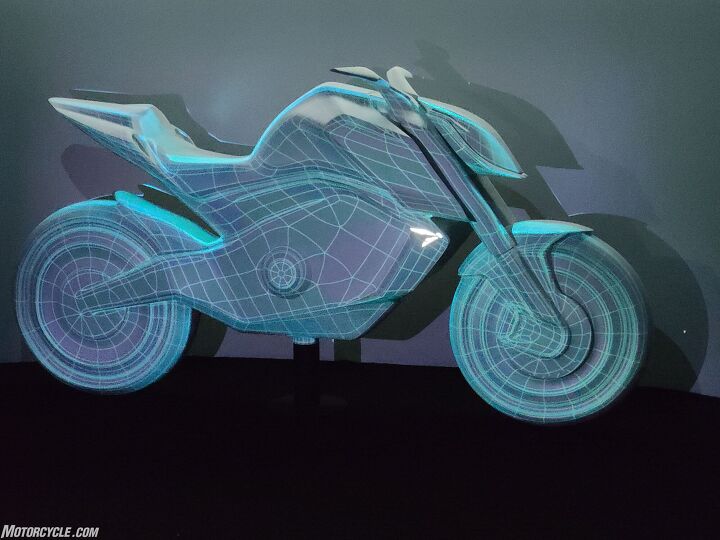
We don’t know what the bike of tomorrow will seem like or be powered by, however on the very least, right here’s hoping the bikes of at this time can keep on the roads due to eFuels – and even one other gas we haven’t invented but.
On paper, eFuel appears very promising. As an alternative of placing all our eggs into battery energy to propel us into the longer term, it is sensible to take a multi-pronged strategy with numerous various vitality sources. Artificial fuels are only one avenue, with the large added bonus of having the ability to energy automobiles already on the street, utilizing infrastructure that already exists. No excellent resolution exists but, and it nonetheless has a number of main hurdles to beat. For the various motorcyclists who refuse to surrender on the inner combustion engine, there’s hope.
Turn out to be a Bike.com insider. Get the most recent bike information first by subscribing to our publication right here.
The put up All the things You Want To Know About eFuels appeared first on Bike.com.



